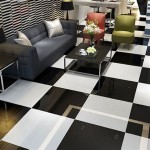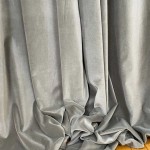Average Cost to Refinish Floors: A Comprehensive Guide
Refinishing floors is a common home improvement project aimed at restoring the beauty and extending the lifespan of existing flooring. It involves sanding down the top layers of the flooring material, primarily wood, to remove imperfections, old finishes, and scratches, followed by applying new stains and protective sealants. The overall cost of refinishing floors is influenced by a variety of factors, making it essential to understand these elements to accurately budget for the project.
This article provides a detailed overview of the average cost to refinish floors, exploring the various factors that contribute to the overall expense. It will cover different flooring types, methods of refinishing, and regional price variations, offering a comprehensive guide for homeowners considering this home improvement endeavor.
Factors Influencing the Cost of Floor Refinishing
Several factors directly impact the average cost to refinish floors. Understanding these factors is crucial for obtaining accurate estimates and preventing unexpected expenses during the project.
Type of Flooring Material: The type of flooring material is one of the primary determinants of refinishing cost. Hardwood floors, such as oak, maple, and cherry, are the most common type of flooring to be refinished. The cost to refinish these floors generally fluctuates based on the type of wood and its condition. Engineered hardwood, while possessing a real wood veneer, can only be refinished a limited number of times, depending on the thickness of the veneer. Laminate and vinyl floors are generally not refinishable, requiring replacement if damaged or worn.
Softwood floors, such as pine, are typically less expensive to refinish than hardwoods due to the softer nature of the wood, requiring less abrasive sanding techniques. However, softwoods are more prone to scratches and dents, potentially necessitating more frequent refinishing. Exotic hardwoods like Brazilian cherry or teak can be expensive to refinish due to the increased effort and specialized products required.
Size and Complexity of the Area: The square footage of the area to be refinished significantly affects the overall cost. Larger areas naturally require more labor, materials, and time, leading to higher expenses. Complexity also plays a role. Rooms with intricate patterns, multiple corners, or staircases can increase the labor required, thereby increasing the cost. Obstacles like built-in cabinets or islands can also add to the complexity and cost of the project. Similarly, refinishing a floor with inlays or borders can be a more complex and time-consuming process.
Condition of the Floors: The condition of the existing floors is a critical factor influencing the cost. Floors with minor scratches and imperfections require less extensive sanding and preparation, resulting in lower costs. However, floors with deep scratches, gouges, stains, or water damage may require more extensive repairs, such as wood replacement or patching. Severely damaged floors may even require complete replacement, which is significantly more expensive than refinishing.
The presence of old adhesives, paint, or embedded dirt can also increase the preparation time and therefore the cost. Floors that are uneven or warped may require leveling before refinishing, adding another layer of complexity and expense. The presence of squeaky floors might also necessitate repair before refinishing begins, addressing underlying issues that contribute to the noise.
Type of Finish and Staining: The choice of finish and stain contributes to the overall cost. Water-based finishes are often more expensive than oil-based finishes but offer advantages such as lower VOC (volatile organic compounds) emissions and faster drying times. The number of coats of finish applied also affects the cost, with more coats providing greater durability but also increasing the material and labor expenses.
Staining the floors adds another layer of cost, as it requires additional labor and materials. The type of stain chosen can also influence the price, with custom colors or specialized stains being more expensive than standard options. Some stains require multiple coats to achieve the desired color depth, further increasing the cost.
Labor Costs: Labor costs are another significant factor in the overall cost of floor refinishing. Hourly rates for professional floor refinishers vary depending on their experience, location, and the complexity of the project. Highly skilled and experienced professionals typically charge higher rates but are more likely to deliver high-quality results. It's important to obtain multiple quotes from different contractors to compare prices and evaluate their qualifications.
Labor costs can also be affected by the time of year. During peak seasons, such as spring and summer, demand for floor refinishing services may increase, potentially leading to higher labor rates. Scheduling the project during off-peak seasons, such as fall or winter, may result in lower labor costs.
Geographical Location: The cost of floor refinishing can vary significantly depending on the geographical location. Areas with a higher cost of living typically have higher labor rates and material costs. Urban areas may also have higher costs compared to rural areas due to increased demand and competition. The availability of specialized flooring products and services can also vary by location, impacting the overall cost.
Additional Services: Additional services, such as furniture removal, baseboard replacement, and dust containment, can add to the overall cost of floor refinishing. Moving furniture out of the work area can be time-consuming and labor-intensive, and some homeowners may prefer to hire professionals to handle this task. Replacing damaged or outdated baseboards can enhance the finished look of the floors but also increases the project's cost.
Dust containment is an important consideration during floor refinishing, as the sanding process can generate a significant amount of dust. Some contractors offer dustless sanding systems that minimize dust dispersal, but these systems may come at an additional cost. Thorough cleaning after the refinishing process is complete is also essential and can be included in the overall project cost.
Cost Estimates for Different Flooring Types
The average cost to refinish floors varies based on the type of flooring material. Here's a breakdown of estimated costs for different flooring types:
Hardwood Floors: Refinishing hardwood floors typically costs between $3 to $8 per square foot. This range includes sanding, staining (if desired), and applying multiple coats of finish. The type of wood, its condition, and the complexity of the project influence the specific cost. For example, refinishing oak floors, which are a common hardwood, may fall at the lower end of the price range, while refinishing exotic hardwoods or heavily damaged floors may be more expensive.
Engineered Hardwood Floors: Refinishing engineered hardwood floors is generally less expensive than refinishing solid hardwood floors, typically ranging from $2 to $6 per square foot. However, it's important to assess the thickness of the veneer before undertaking the project. If the veneer is thin, it may not be possible to sand it down without damaging the underlying layers. In some cases, only a light buffing and re-coating are possible.
Softwood Floors: Refinishing softwood floors, such as pine, typically costs between $2.50 and $7 per square foot. Softwood is easier to sand than hardwood, which can result in lower labor costs. However, softwoods are more susceptible to damage, so the preparation and finishing steps may require extra care.
Parquet Floors: Parquet floors, with their intricate patterns, can be more challenging and expensive to refinish than standard plank floors, typically costing between $4 and $10 per square foot. The complex patterns require careful sanding to avoid damaging the wood, and the staining and finishing process can be more time-consuming.
Methods of Floor Refinishing and Their Cost Implications
There are various methods of floor refinishing, each with its own cost implications. The choice of method depends on the type of flooring, its condition, and the desired result.
Traditional Sanding and Refinishing: This is the most common method of floor refinishing, involving sanding down the top layers of the flooring to remove imperfections, old finishes, and scratches. The cost for traditional sanding and refinishing can vary greatly depending on the aforementioned factors. It involves using different grit sandpaper to achieve a smooth surface. Dust containment is a major consideration with this method, as it can generate a significant amount of dust.
Dustless Sanding: Dustless sanding systems use specialized equipment to minimize dust dispersal during the sanding process. These systems typically involve using a vacuum system that captures dust as it's generated, reducing the amount of dust that escapes into the air. While dustless sanding can be more expensive than traditional sanding, it offers significant benefits in terms of air quality and cleanup.
Screening and Recoating: Screening and recoating involves lightly abrading the existing finish to prepare it for a new coat of finish. This method is suitable for floors that are in relatively good condition with only minor scratches or imperfections. The steps are less intensive compared to sanding and refinishing, the cost is generally lower. This is a cost-effective way to refresh the appearance of the floor without completely removing the old finish.
Chemical Stripping: Chemical stripping involves using chemicals to remove the old finish from the floor. This method can be effective for removing multiple layers of finish or stubborn coatings. However, it can also be more time-consuming and requires careful handling of the chemicals. Chemical stripping can also be more expensive than sanding, as it requires specialized products and equipment.
It is crucial to consider all of these factors when budgeting for a floor refinishing project. Obtaining multiple quotes from reputable contractors and understanding the scope of work involved can help homeowners make informed decisions and ensure they are getting the best value for their money.

Cost To Refinish Hardwood Floor Refinishing Fixr

Cost To Refinish Hardwood Floor Refinishing Fixr

Hardwood Floor Refinishing Cost Urban Customs

Cost To Refinish Hardwood Floor Refinishing Fixr

Cost To Refinish Hardwood Floors Sandless In Seattle

The Cost To Refinish Hardwood Floors 7 Things You Need Know

What Is The Cost To Refinish Hardwood Floors In Georgia

How Much Does It Cost To Refinish Hardwood Floors In 2025

Cost To Refinish Wood Floors Price Guide

Cost To Refinish Hardwood Floor Refinishing Fixr







